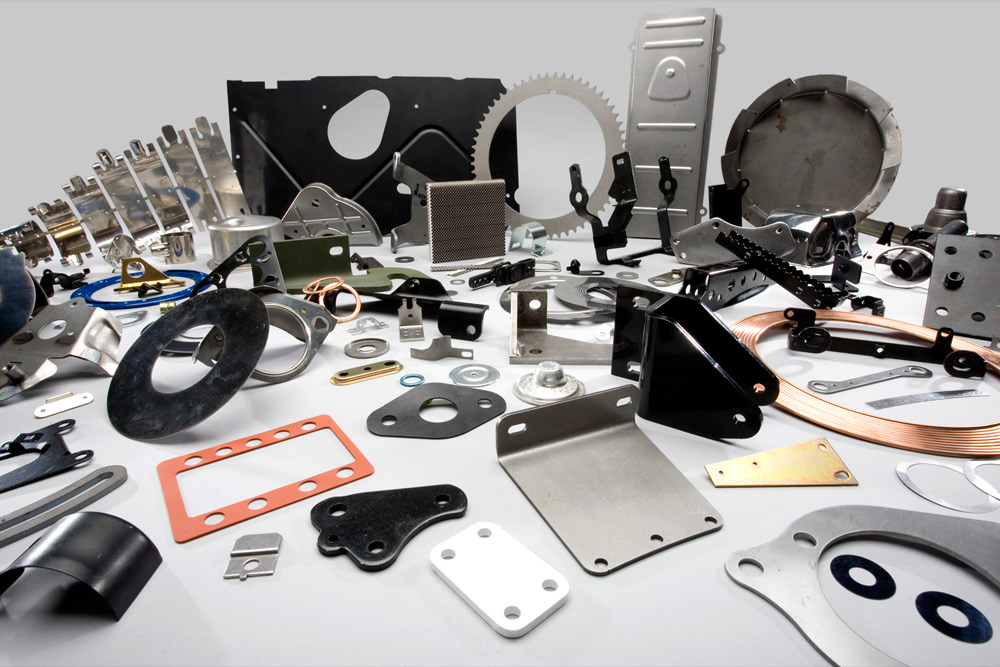Steel Marking Technologies: Elevating Manufacturing Processes for Superior Results
In the realm of manufacturing processes, metal marking has actually long been a keystone strategy for generating a selection of accuracy elements. With the unrelenting march of technical advancement, the landscape of metal marking is undergoing a significant change.
Evolution of Metal Marking Methods

Additionally, innovations in material science have actually led to the advancement of high-strength alloys that can now be flawlessly marked right into elaborate forms, satisfying a wider range of commercial applications. The integration of robotics and expert system has actually further enhanced the marking procedure by enhancing rate and precision while minimizing the threat of human mistake.

Influence of Advanced Products
Have innovative materials transformed steel marking procedures dramatically in the manufacturing market? The response is a resounding yes (Metal Stamping). The assimilation of advanced products has actually revolutionized metal marking, enabling makers to attain higher precision, enhanced efficiency, and boosted product high quality. By making use of products such as high-strength alloys, progressed compounds, and cutting-edge finishings, steel marking procedures can currently produce parts that are lighter, stronger, and extra sturdy than in the past.
These sophisticated products supply exceptional mechanical residential or commercial properties, rust resistance, and thermal security, permitting producers to fulfill the needs of modern-day industries such as aerospace, automobile, and electronics. Additionally, using innovative products in steel marking has actually promoted the production of complicated geometries and complex layouts that were formerly unattainable via typical approaches.
Additionally, the implementation of advanced materials has resulted in minimized material waste, reduced manufacturing costs, and shorter preparations, making metal marking procedures a lot more economical and sustainable. As modern technology proceeds to advance, the influence of innovative materials on steel stamping processes is expected to drive further technology and boost the competitiveness of makers in the worldwide market.
Automation in Metal Stamping
The evolution of steel marking processes driven by the assimilation of innovative products has set the phase for considerable improvements in automation within the production sector. Automation in steel stamping has actually changed manufacturing processes, improving effectiveness, precision, and total outcome high quality. With the use of robotics, sensors, and computer-controlled systems, tasks that were as soon as hands-on and time-consuming can currently be performed with unrivaled rate and accuracy.
Automation in steel stamping not only accelerates manufacturing rates yet also makes certain consistency in the production process. By minimizing human intervention, the risk of mistakes is considerably lowered, causing higher levels of item uniformity and dependability. In addition, automation enables makers to take on complicated stamping why not check here tasks that would be difficult or impractical to achieve by hand.
In addition, automation in metal marking adds to a safer working atmosphere by reducing the requirement for staff members to engage in unsafe or repetitive tasks - Metal Stamping. This change towards automation not only improves performance but also paves the means for the future of manufacturing, where innovation plays a main duty in driving operational excellence
Quality Assurance and Examination Systems
With a focus on precision and dependability, top quality control and examination systems play an essential function in making certain item quality in metal stamping processes. These systems are developed to keep an eye on every phase of manufacturing, from product examination to the end product, to guarantee that all elements satisfy the needed requirements. By carrying out sophisticated modern technologies such as optical examination systems, coordinate measuring machines (CMM), and automated determining devices, makers can detect even the tiniest discrepancies in dimensions, surface top quality, and total honesty of stamped components.

Sustainability Practices in Metal Stamping
Building upon the foundation of precision and reliability developed via quality control and inspection systems, the integration of sustainable techniques in metal marking processes is progressively becoming a prime focus for producers looking for to decrease ecological effect and optimize source application. Sustainability methods in steel stamping incorporate a variety of efforts targeted at reducing waste generation, power intake, and greenhouse gas discharges throughout the production procedure.
One trick facet of sustainability in metal stamping is the fostering of environment-friendly products and technologies that advertise recyclability and waste reduction. By utilizing recycled materials and implementing energy-efficient equipment, producers can lower their carbon visit the site impact and add to an extra sustainable production cycle. In addition, enhancing production procedures to minimize product waste and power use not just benefits the atmosphere but additionally causes cost financial savings for businesses in the future.
Additionally, the implementation of sustainable practices in steel stamping can enhance brand reputation and interest environmentally aware consumers. As sustainability continues to acquire importance in the manufacturing market, incorporating green initiatives right into steel stamping procedures is important for lasting success and competition out there.
Verdict
In conclusion, metal marking techniques have dramatically evolved with time, including advanced products and automation to boost manufacturing processes. Quality control and examination systems play a crucial duty in making sure premium outcomes, while sustainability practices are increasingly being executed to minimize ecological effect. These technologies in steel marking have actually revolutionized the sector, leading to a lot more sustainable and efficient production methods for various markets.
Steel stamping, once a manual and labor-intensive process, has changed right into a very automated and sophisticated method of shaping metal sheets into various forms and designs.Have advanced materials transformed metal stamping processes considerably in the manufacturing industry? By making use of materials such as high-strength alloys, advanced compounds, and cutting-edge finishings, steel marking procedures can currently generate components that are lighter, more powerful, and much more long lasting than ever previously.
The evolution of steel stamping procedures driven by the integration of innovative products has established the phase for significant improvements in automation within the manufacturing industry.In verdict, metal marking techniques have actually substantially progressed over time, integrating advanced materials and automation to improve making processes.